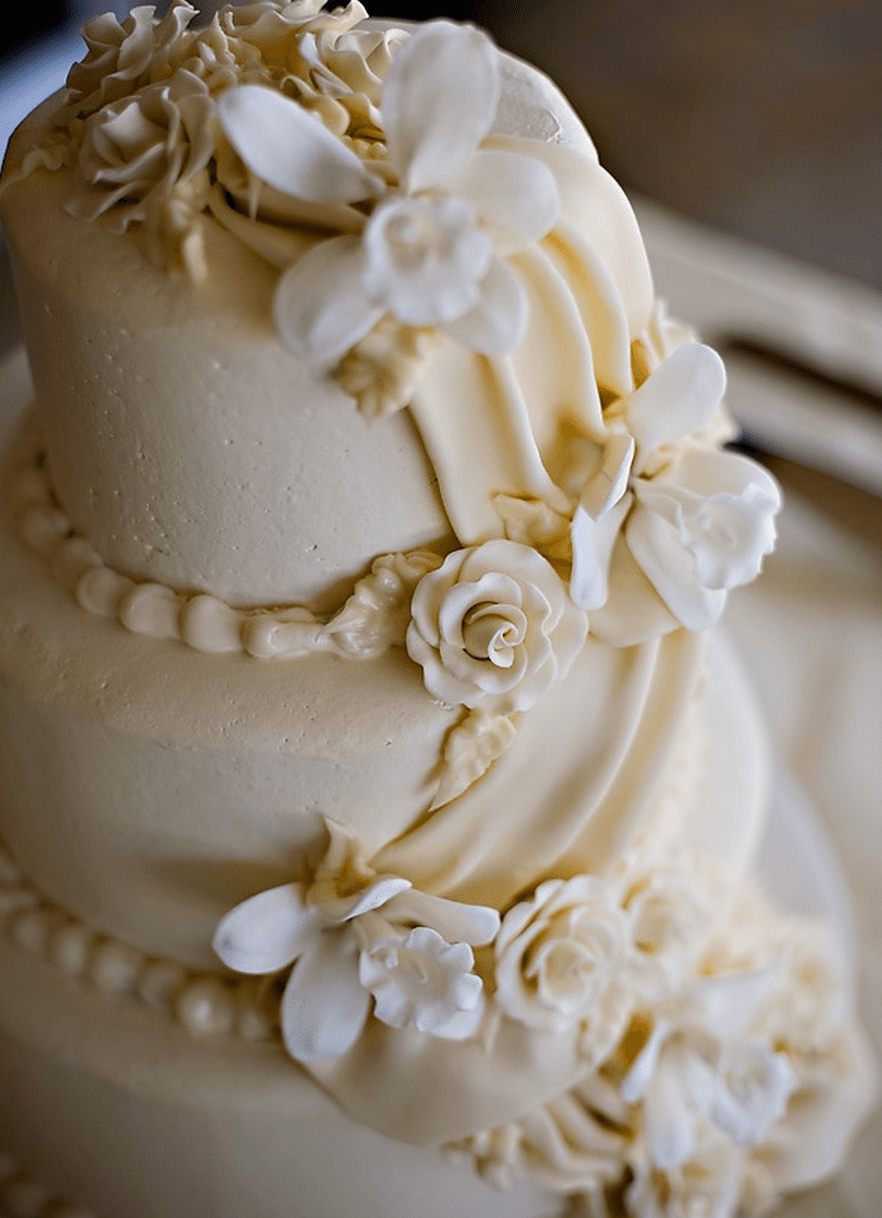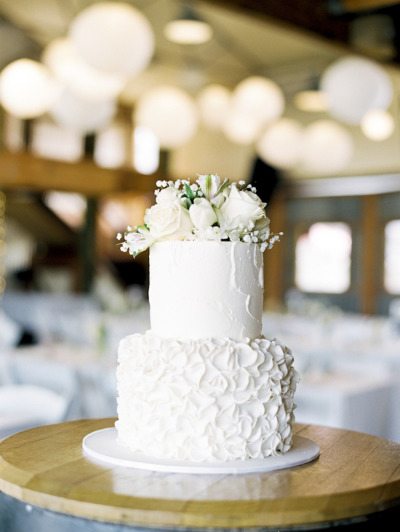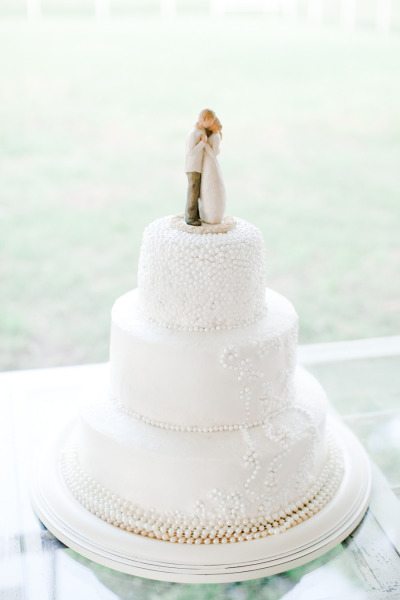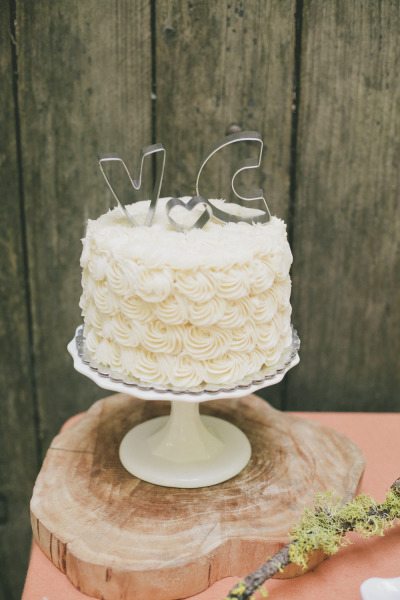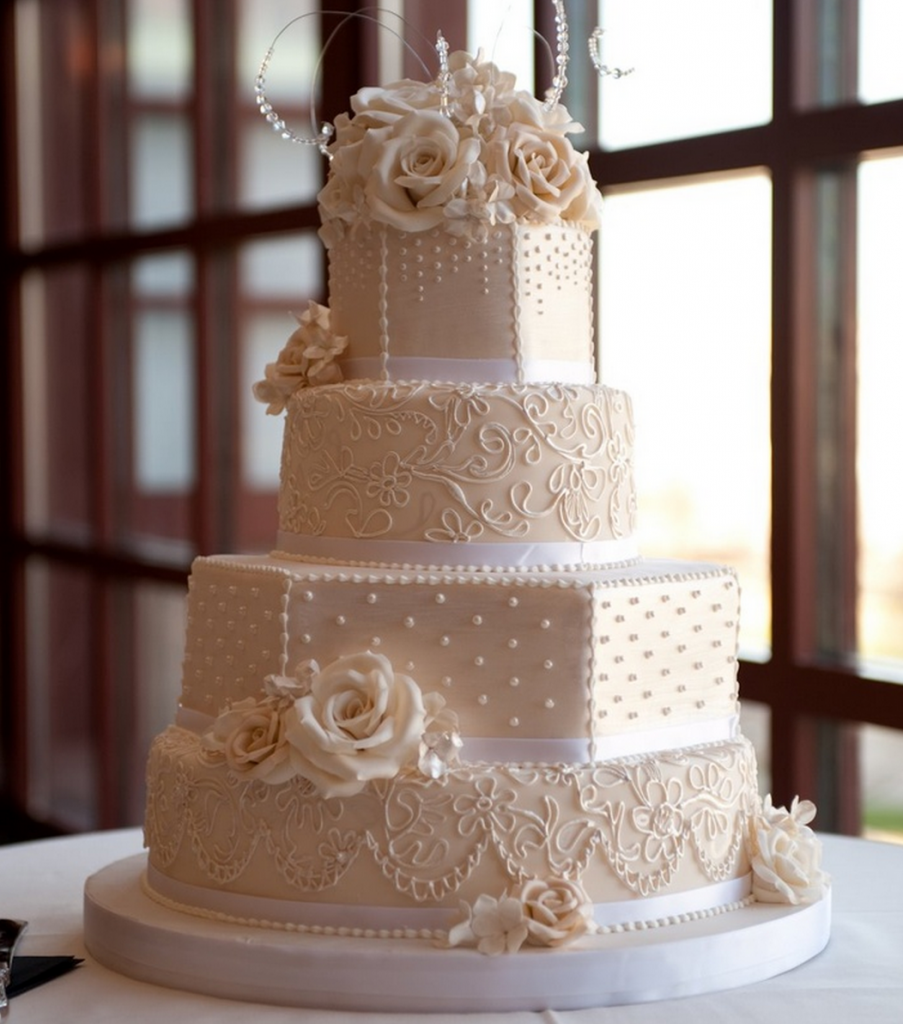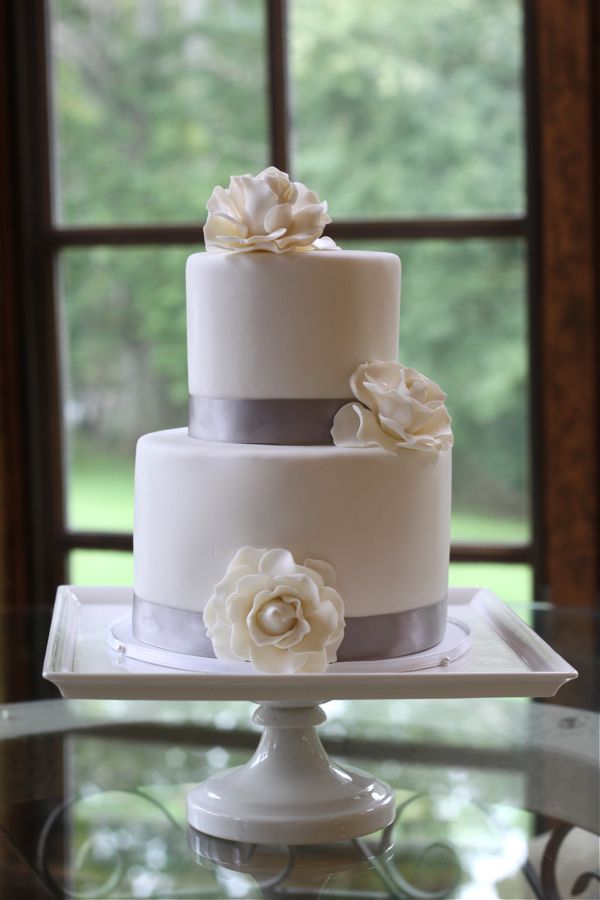
Those trailblazing Romans!
They gave us law, roads, aqueducts, agricultural irrigation, plumbing and more. But would you guess they also paved the way for what has evolved into show stopping wedding cakes, worthy of their own hit television shows?
Before we even get to think about formal towering cakes and painterly cascading gum paste flowers, we have to go way back in time to the Roman Empire. It all started with the Romans breaking wheat or barley bread over a bride’s or the couples’ head(s) and sprinkling them with the crumbs. The symbolism of this custom ranged from the groom’s dominance over the bride to wishes for the couple’s fertility and abundance. Medieval nuptials weren’t much more glamorous, and were consecrated with unadorned biscuits.
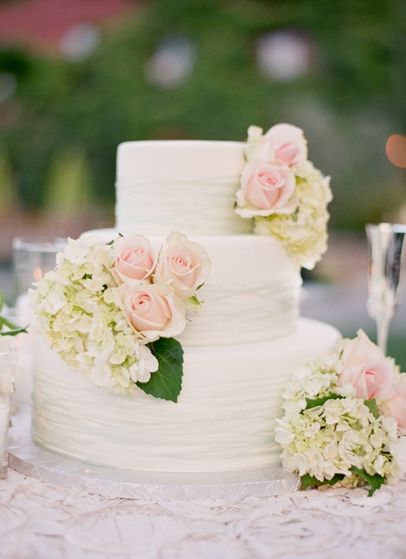
Fast forward a couple of centuries, and people had started stacking up those biscuits. If a bride could stretch over the biscuit pile to bestow a kiss upon her new husband, the fortunes would smile upon their union. Croquembouche (that delightful pièce montée of cream puffs, wrapped in a gossamer web of caramelized spun sugar) eventually morphed out of this tradition when some French pastry chef’s muse was working overtime.
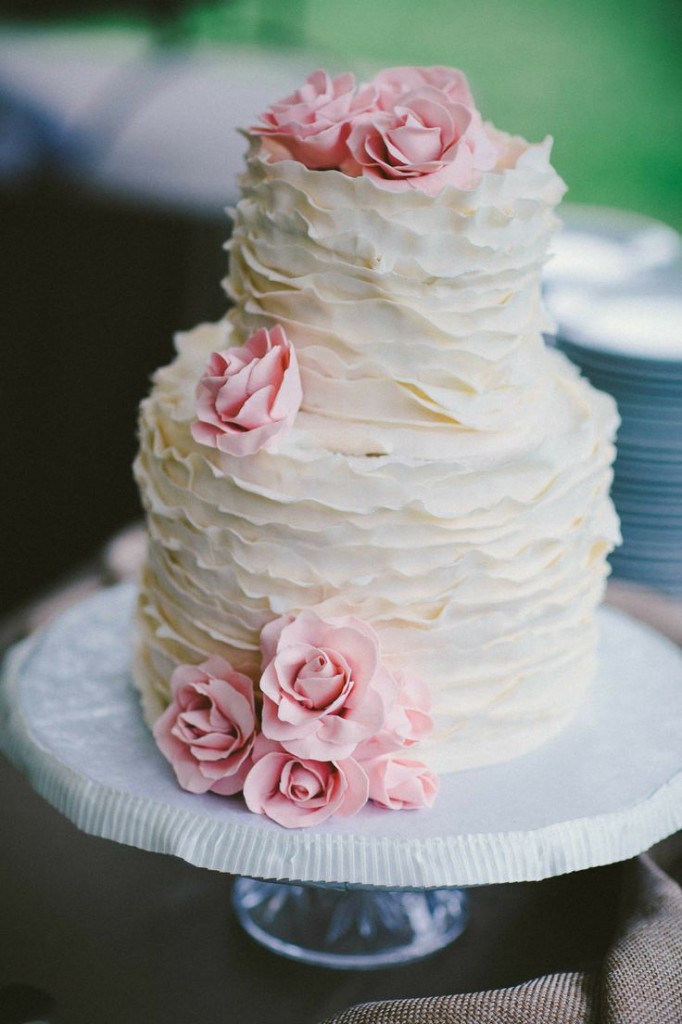
Around the 1600’s, sugar was becoming more readily available, albeit still quite costly. Because the more refined the sugar, the whiter (and more expensive) it was, a very white wedding cake bespoke the family’s affluence, as well as the bride’s innocence. To economize on the little bit of sugar that they could afford, the less affluent decorated their slightly-sweetened cakes with a paste fashioned out of almonds and sugar – the forerunner of fondant, which has actually been around for centuries. Prior to the days of refrigeration, fondant was used to cover dense wedding fruit cakes as they aged (sometimes for as long as 6 months). Upon serving, the fondant was usually discarded. (Even now, many people love the look, but don’t actually eat it.) Similarly, the traditional delectable and aromatic fruit and rum/wine delicacy Jamaican/Caribbean Black Cake is still covered in fondant or royal icing.
Starting around the Victorian era in Europe, cakes grew increasingly elaborate and came to resemble today’s wedding cake masterpieces. Starting with Queen Victoria’s cake and continuing with cakes for Charles and Diana, and Fergie and Andrew, Saudi and Swedish royal wedding cakes have become the stuff of legend.
More modernly, here in the American South, the groom’s cake was born. It has since morphed into sometimes elaborately detailed nods to the groom’s interest, on a day that can seem to center around showcasing the bride. Typically, it’s meant to serve about a quarter of the guests or fewer. (Depending on the complexity of design and the labor involved, a groom’s cake can potentially get to be quite costly, despite being so much smaller than the wedding cake.)
Today, the English still favor wedding cakes made of a dense fruitcake, and covered in a thin layer of apricot jam and marzipan, then covered in fondant or royal icing for an exceptionally flawless finish. Europeans used to opt for smaller wedding cakes, but are catching up with us in the trend of preferring a showpiece.
Contemporary wedding cake can tell guests a lot about the couple joining their lives. It can reflect the couple’s personal style or design sensibility. For instance, some brides are all about the “bling belts” around the tiers, and the Swarovski crystal monogram as a cake topper. Then there are the weddings where a beautiful, simple buttercream cake with fresh organic flowers is the only thing that will do. But no matter the design or ingredients, the newlyweds’ first act as husband and wife is a nurturing one: feeding each other wedding cake. This custom symbolizes taking care of each other, as well as joining lives and sharing abundance with each other, and loved ones.
Plain or elaborate, the wedding cake will always be a sweetly integral part of the first day of a married couple’s new life together. On no other day of their lives will there be an occasion for so meaningful a cake.


